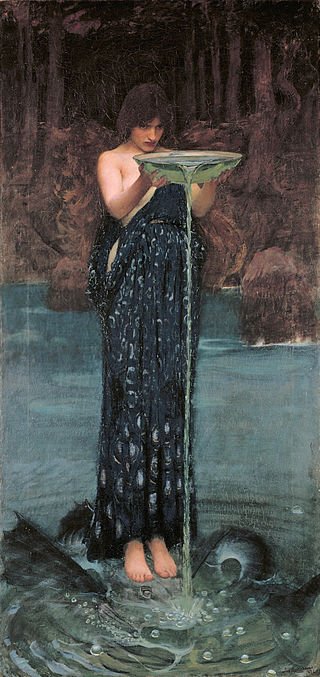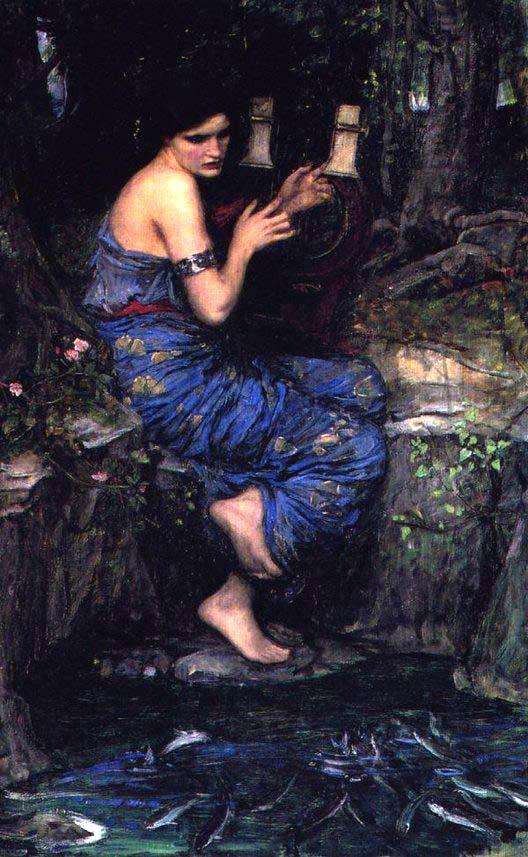So Fresh and So Clean – The Art of Sacred Bathing and Spiritual Cleansing
ear Miracles,
We can all feel the difference between a messy room and a clean room. Clutter, refuse, and objects that are not in their proper places create confusion, imbalance, and waste our time. This is true for our physical lives as well as for our emotional and spiritual lives. In our relationships, for example, we can see how continually bringing up issues from the past that need to be released and buried can damage the present.
Think of a clean kitchen. Maybe the kitchen is sparkling and spotless or maybe it is a little dingy around the corners but more or less clean. Now imagine someone walking through that kitchen with mud on their feet, leaving their muddy footprints all over that clean kitchen floor. If this were really your kitchen what would you do? Would you leave the muddy footprints where they are, ignoring them and hoping that they would go away? Or would you get out the mop and go to work on them?
Most of us would not leave muddy footprints in our kitchens, but I am constantly surprised at how many folks refuse to clean up the muddy foot prints that have trekked all over their hearts, minds, bodies, and souls. The problem of course is that one cannot take a bottle of pine-sol to the soul, so what can we do?
As it turns out, quite a bit. Folk healing and magical traditions world over have remedies that address the state of spiritual muddiness we all encounter from time to time. Below are some of the time honored traditions I have been taught and can personally vouch for.
Sacred Bathing
 There is a saying in my family when one of us gets really sick. We say “I am so sick my hair hurts!” Have you ever been that ill, where your hair literally hurts? Thankfully I am not sick in that way very often these days but when I am I immediately know what to do.
There is a saying in my family when one of us gets really sick. We say “I am so sick my hair hurts!” Have you ever been that ill, where your hair literally hurts? Thankfully I am not sick in that way very often these days but when I am I immediately know what to do.
I wake up early in the morning before anyone else is up, I fill my bathtub with hot, hot, water and I pour in a handful of blessed salt, Angelica Root, Peppermint, Cinquefoil, Rosemary, a chunk of Bloodroot, a pinch of Lavender, and a sprinkle of Life Everlasting. Yes, I’m taking a bath to ease my body, to get the sweat up so that my lymphatic system goes into action, but I am also taking sacred bath — a bath of healing, restoration, and blessing.
Often in my work I advise someone to take a “sacred bath” — it is an easy and inexpensive ritual act that may be done at home whenever the need arises. Many of my clients know the basics of sacred bathing, quite a few of them have sacred bathing traditions in their own families. Even so we are well served in revisting the art of the sacred bath.
First we must ask ourselves, what is a sacred bath? I use the term sacred bath to denote a bath taken for ritual or ceremonial purposes as opposed to a bath taken only for physical cleaning. Sacred bathing is a tradition found throughout the world. The use of water in combination with the just right botanicals and minerals, blessings, and focused intention has been with us since ancient times. Special waters herbs roots, oils, and other preparations are often involved in sacred bathing. Blessing ways, petitions, affirmations or mantras may also be part of you sacred bath. Though sacred baths are taken for a variety of reasons, they usually have something to do with cleansing and purification of the body, mind, and spirit. To that end, let us consider the one element that every sacred bath has in common.
It all begins with water ~
Water is one of the four classical elements honored in the Western Sacred Arts, the element of Water is also acknowledged and represented in many Asian and African traditions as well. Universally water is seen as an ideal element to work with in rituals concerned with healing, restoration, and cleansing. It is also commonly included in ceremonies designed to deepen an individual’s relationship to their intuition and inner knowing.
Tales of sacred springs, holy lakes, and blessed bodies of waters populate both myth and fairy tales while even today in largely Catholic areas holy water is gathered and used in the daily blessing of family, home, and land.
Often the realm of the dead and the realm of the living are separated by, among other things, a river or body of water. This has found modern translation in the teaching that whenever one is visiting a graveyard or trafficking with spirits of the dead, a good way to cleanse away any negative or malicious energy is to cross running water either in a vehicle or by foot as the belief is that the departed will not be able to move past that natural boundary line. We also find the notion of water’s protective qualities emphasized in the belief that setting a glass of clean water on a bedside table may protect whoever slumbers from unwelcome nightmares.
 With the level of emphasis placed on water it should come as no surprise that the kind of water we use in a sacred bath is quite important. In myth and folklore we often find very specific rites given that involve bathing is specific bodies of water at specific times of day and even during specific times of the year. To this day in many countries pilgrimages are made by people of all faiths to bodies of water that are believed to be particularly blessed.
With the level of emphasis placed on water it should come as no surprise that the kind of water we use in a sacred bath is quite important. In myth and folklore we often find very specific rites given that involve bathing is specific bodies of water at specific times of day and even during specific times of the year. To this day in many countries pilgrimages are made by people of all faiths to bodies of water that are believed to be particularly blessed.
For our purposes I will assume that sacred bathing is a rite my readers desire to perform at home, where there is not necessarily a sacred body of water near by. I will also note that for some of us who, like myself, live in water-poor parts of the world any body of water is sacred! No matter where you are bathing, it is always advised to procure water from a natural source usually a spring or underground natural aquifer. If your water comes from a man-made reservoir or desalination plant for instance, you may want to represent water from a natural source by taking a cup or bowlful of spring, river, or lake water and adding it to your bath. If you choose to do this please note that some water does contain bacteria and other impurities that can be dangerous. Many rivers, streams, and springs have information about their bacteria levels available on the web, but if you cannot make sure that the water you have is safe then boiling it for at least ten minutes is a good way to quickly purify it for use.
Those are the outer, external considerations around the most essential element. But as you prepare your sacred bath, I encourage you to consider your inner relationship to the element of Water as well. What does water mean to you? What do you think and feel and envision when you hear the word “water”? How much water do you drink every day? How many ways do you use water on a daily basis? How many aspects of your life are directly supported by the presence of water? You are going to water for sacred purposes so take a few moments to reflect on your relationship to it, practically and spiritually, will do nothing but deepen your entire experience.
Name your purpose ~
After you have decided on the right source of water for your sacred bath you will want to take some time to think about why you are creating a bathing ceremony to begin with. What are the muddy footprints you are seeking to clean up after? When, where, and how did they appear in your life? Are you dealing with the debris that follows in the wake of lack of self-care? Are you seeking to heal a broken heart or bandage wounded pride? Is your desire to celebrate sensual beauty and pleasure? You can get clear on your intention by asking these two questions:
1.) What outer change am I looking for?
2.) What inner changes are required to support that outer change?
Then add Botanicals and Blessings ~
 Your purpose or intention is what will guide your choices in botanical, mineral, and blessing elements to add to your sacred bath blend. While there are many herbal books and encyclopedias that will list out various plants and their spiritual associations and uses, I have been taught that the individual bathing should have their own relationship with whatever ingredients they choose to work with. If you grow plants yourself always look at your own garden for inspiration. If you responsibly wildcraft then take a walk in the woods and consider what botanicals might be willing to lend you their medicine. Of course you can always look at the books but starting in your own kitchen gives you a much more direct relationship with the entire process.
Your purpose or intention is what will guide your choices in botanical, mineral, and blessing elements to add to your sacred bath blend. While there are many herbal books and encyclopedias that will list out various plants and their spiritual associations and uses, I have been taught that the individual bathing should have their own relationship with whatever ingredients they choose to work with. If you grow plants yourself always look at your own garden for inspiration. If you responsibly wildcraft then take a walk in the woods and consider what botanicals might be willing to lend you their medicine. Of course you can always look at the books but starting in your own kitchen gives you a much more direct relationship with the entire process.
The same is true of the blessings, petitions, prayers, affirmations, mantras, or words of power that you intend to use. Your stated goal, the external change you are hoping to achieve, will go a long way in helping you determine the best way to make your prayer and bless yourself. If in doubt, you can always go with a general blessing like this Blessing of the Body.
This is also the part of the process where you consider what kind of bathing preparation you wish to create. Are you creating a mineral rich restorative bath soak? Are you going to create a delightfully fizzy bath bomb or a specialty bath melt? If you only have a shower and think that you cannot have a sacred bathing experience because you do not have a bath tub then I have news for you: a bundle of fresh herbs tied directly to your shower nozzle is fragrant and pure magic. For great ideas on the art of bathing and the many preparations that are possible I strong recommend the magazine Willow and Sage. Keep in mind that after taking your sacred bath you might want to anoint yourself with an oil, lotion, or dust yourself with powder – all of the same principles apply to making or choosing these formulas.
The Bath itself ~
 As I always say, look first to your own traditions and the practices you have made your own — because water is such a universally recognized element and sacred bathing is a sacred art found world over, many of you will already have ways and means of sacred bathing that work beautifully for you. However, if you do not have a framework within which to work, then allow me to share some of my own approaches.
As I always say, look first to your own traditions and the practices you have made your own — because water is such a universally recognized element and sacred bathing is a sacred art found world over, many of you will already have ways and means of sacred bathing that work beautifully for you. However, if you do not have a framework within which to work, then allow me to share some of my own approaches.
In my family sacred baths are usually taken at dawn because the sun is considered one of the most important celestial bodies to observe. At dawn the sun begins to rise and is viewed as both young and strong. Whenever we wish to draw something to us — be it cleansing, renewed health, love, wealth, or specific opportunities, we take our sacred bath at dawn to attune ourselves to that nascent solar potency. In rarer cases a sacred bath may be taken at dusk when the sun is setting. The purpose behind that choice is concerned with banishing something or someone from our lives — such as illness, cross words between friends, etc.
Lunar phases may also be taken into consideration following the common motif of working to draw good things to you during the period from the New Moon to the Full Moon and working to remove things from your life during the period from the Full Moon to the New.
Once you have decided on the right time for your ritual I recommend that you gather whatever you will need. Clean towels, clean clothes, and in many traditions clean shoes or socks are all highly recommended. If you are going to bed after your sacred bath then clean sheets and a lovely scent in your bedroom might be added to your list. If you are going to recite specific words during your sacred bath then have a copy of those words at the ready. Candles, essential oils or incense, music, and whatever other ceremonial items you may wish to have present can all play a role in your bathing experience. You might even want to have a special drink or delightful treat on hand as you bathe – it is traditional to end ceremonies with some kind of feast after all! You will also want a small cup or bowl, the purpose of which will be explained below.
The Details are in the Disposal ~
As I have been taught, the final part of the sacred bath is the most important. Once you have finished bathing you may wish to anoint yourself with an oil or lotion and/or dust yourself with powder. Traditions like African American Conjure place a great emphasis on allowing yourself to air dry. Other traditions such as Currendera encourage wrapping up in a special towel or blanket. Choose what makes sense and feels in best alignment with your stated purpose. The next step is the most critical: before draining the tub or stepping out of the shower you will want to collect some of the water with which you have bathed. This water now carries your imprint, your essence, and as such it has become a magical material. Like all such materials it must be disposed of with respect and purpose. So if your desire is to draw blessing and abundance then pour out the water at the base of a large and healthy tree facing east. If your desire to remove affliction pour the water out at a four way crossroads while facing west — and when you turn to go home go in a different direction than the one you came, and never, step back over the place where you have poured out the water.
Although the steps to sacred bathing may sound time consuming and exhausting at first, this really is one of the most simple and straightforward ritual acts you can perform. It is also a kind thing to do for yourself and your precious body – be careful, you may soon find that every bath you take becomes a sacred bath!
Spiritually Cleansing a space or vehicle~
 A sacred bath is one approach (and my favorite) to spiritual cleansing, but it is important to keep in mind that the places and spaces we physically occupy can also accrue their own energetic funk and need to be cleaned up from time to time. When it comes to cleaning any physical space there are a couple of guidelines to keep in mind.
A sacred bath is one approach (and my favorite) to spiritual cleansing, but it is important to keep in mind that the places and spaces we physically occupy can also accrue their own energetic funk and need to be cleaned up from time to time. When it comes to cleaning any physical space there are a couple of guidelines to keep in mind.
Clean from top to bottom (this is just practical sense, you dust before you vacuum) and back to front. This applies whether you are cleaning a room, cubicle, entire house, or vehicle. My favorite spiritual cleansing agent is one that my mother and I make every year — we call it Momma Hen’s Fabulous ‘n’ Famous floor wash. I also like Mrs. Meyers Lemon Verbena scented products which are made from essential oils, are biodegradable, and phosphate free. Lemon Verbena is one of many herbs used to spiritually clean, unlock doors, open the way, and attract good luck. As always consider what botanicals are your natural allies in this endeavor.
Whether cleaning a single room, home, or vehicle start in the back and move to the front. When cleaning multiple rooms after the first room has been dusted, mopped, and vacuumed you can say a blessing over the space, light a bit of incense, and/or light a small candle.
If you have co-workers who are negative and difficult for you to be around, stuck in a job that is not rocking your world, or dealing with aggressive supervisors then magically cleaning your work space, office, or cubicle is a good idea. Follow the same basic guidelines for cleaning a house. Obviously, skip lighting the candle or incense, reciting the blessing is just fine. If vacuuming is not feasible then lightly dust your area with finely ground botanicals you associate with abundance and good fortune.
Vehicles are another area that can benefit from spiritual cleanings. Again, the principle is the same: cleanse from top to bottom and back to front. Make sure that you clean the inside and outside of the vehicle, including the tires.
 In closing I would simply say that it is not merely coincidental and that in myth, in folklore, and in many spiritual traditions that art of sacred bathing and spiritual cleaning are strong emphasized. During these acts more than perhaps any other we are able to fully see ourselves – our broken places, our beauty, and our blessings. From that clear vision we are able to call in all that is whole-making, healing, and holy – what greater magic is there?
In closing I would simply say that it is not merely coincidental and that in myth, in folklore, and in many spiritual traditions that art of sacred bathing and spiritual cleaning are strong emphasized. During these acts more than perhaps any other we are able to fully see ourselves – our broken places, our beauty, and our blessings. From that clear vision we are able to call in all that is whole-making, healing, and holy – what greater magic is there?
Comments are closed.